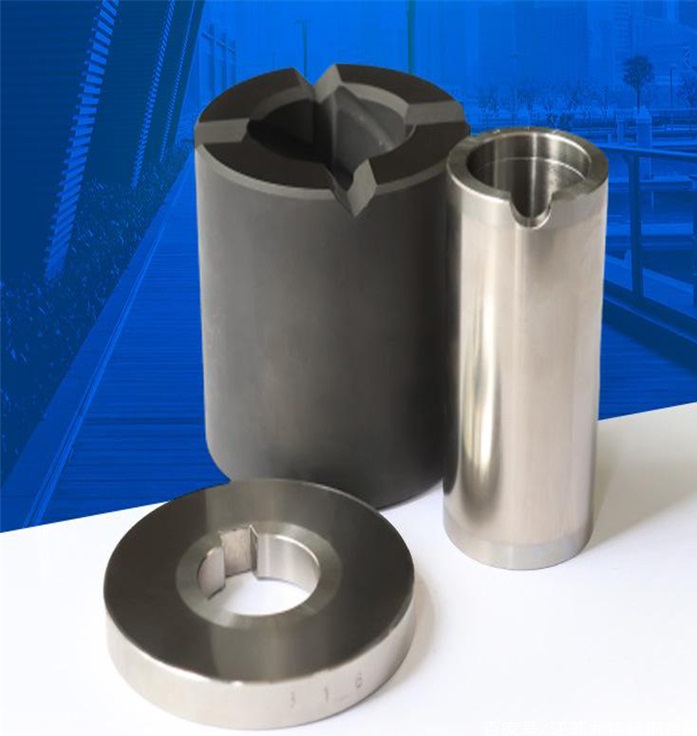Cobalt-chromium-tungsten alloy (CoCrW)
Cobalt-chromium-tungsten alloy (CoCrW) is one of the Stellite alloys. Stellite alloy is a hard alloy that can resist various types of wear and corrosion as well as high-temperature oxidation. It is commonly known as cobalt-based alloy. Initially Stellite alloy was a cobalt-chromium binary alloy, and later developed into a cobalt-chromium-tungsten ternary alloy. Cobalt-chromium-tungsten alloy is an alloy with cobalt as the main component, containing a considerable amount of chromium, tungsten and a small amount of nickel, molybdenum, silicon, carbon, niobium, tantalum and other alloying elements, and occasionally also contains iron. Depending on the composition of the alloy, they can be made into welding wires, and the powder can be used for hard surfacing, thermal spraying, spray welding and other processes, and can also be made into castings and forgings and powder metallurgy parts.
Cobalt chromium tungsten alloy composition
The basic composition of cobalt-chromium-tungsten alloy is: Co: 50% ~ 58%, Cr: 28% ~ 30%, W: 4% ~ 6%, Ni: 2% ~ 4% and other alloys. The melting point is 1470℃.
It can be seen from the alloy composition that the cobalt and tungsten content of the alloy are very high, giving the material excellent high-temperature properties and poor thermal conductivity. It is these characteristics that make the sparks appear dark red during grinding of cobalt-chromium-tungsten alloy, and the number of sparks is very small. The metal separated from the surface of the workpiece can easily clog the grinding wheel, causing the grinding conditions to deteriorate rapidly and generating a large amount of grinding heat. Spreads rapidly, causing low efficiency and burns on the surface of the workpiece.
Cobalt chromium tungsten alloy production process
- Folding heat treatment
The size and distribution of carbide particles and grain size in cobalt-chromium-tungsten alloy are very sensitive to the casting process. In order to achieve the required lasting strength and thermal fatigue performance of cast cobalt-chromium-tungsten alloy components, the casting process parameters must be controlled. Cobalt-chromium-tungsten alloy requires heat treatment, mainly to control the precipitation of carbides. For cast cobalt-chromium-tungsten alloys, high-temperature solution treatment is first performed, usually around 1150°C, to dissolve all primary carbides, including some MC-type carbides, into the solid solution; then aging treatment is performed at 870-980°C. , causing carbides (most commonly M23C6) to re-precipitate.
- Folding cladding
Chromium-tungsten cladding alloy contains 25-33% chromium, 3-21% tungsten, and 0.7-3.0% carbon. , as the carbon content increases, its metallographic structure changes from hypoeutectic austenite + M7C3 eutectic to hypereutectic M7C3 primary carbide + M7C3 eutectic. The more carbon it contains, the more primary M7C3, the macro hardness increases, and the abrasive wear resistance improves, but the impact resistance, weldability, and machining performance will decrease. Cobalt-chromium-tungsten alloy alloyed with chromium and tungsten has good oxidation resistance, corrosion resistance and heat resistance. It can still maintain high hardness and strength at 650°C, which is an important feature that distinguishes this type of alloy from nickel-based and iron-based alloys. Cobalt-chromium-tungsten alloy has low surface roughness after machining, has high scratch resistance and low friction coefficient, and is also suitable for adhesive wear, especially on sliding and contact valve sealing surfaces. However, when worn by high-stress abrasives, the wear resistance of cobalt-chromium-tungsten alloy with low carbon content is not as good as that of low-carbon steel. Therefore, the selection of expensive cobalt-chromium-tungsten alloy must be guided by professionals in order to maximize the potential of the material.
- Wear resistance
The wear of alloy workpieces is largely affected by the contact stress or impact stress on its surface. Surface wear under stress depends on the interaction characteristics of dislocation flow and contact surfaces. For cobalt-chromium-tungsten alloys, this feature is related to the lower stacking fault energy of the matrix and the transformation of the matrix structure from a face-centered cubic to a hexagonal close-packed crystal structure under the influence of stress or temperature. Metal materials have excellent wear resistance. In addition, the content, morphology and distribution of the second phase of the alloy such as carbides also have an impact on the wear resistance. Since the alloy carbides of chromium, tungsten and molybdenum are distributed in the cobalt-rich matrix and some chromium, tungsten and molybdenum atoms are solidly dissolved in the matrix, the alloy is strengthened, thereby improving the wear resistance. In cast cobalt-chromium-tungsten alloy, the size of carbide particles is related to the cooling rate. Faster cooling will result in finer carbide particles. During sand casting, the hardness of the alloy is lower and the carbide particles are larger. In this state, the abrasive wear resistance of the alloy is significantly better than that of graphite casting (the carbide particles are finer), while the adhesive wear resistance is better than that of graphite casting (the carbide particles are finer). There is no obvious difference, indicating that coarse carbides are beneficial to improving abrasive wear resistance.



